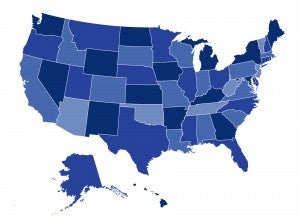
By Rachel Schwab, Sabrina Corlette and Kevin Lucia
In one of his first acts in office, President Joe Biden signed an executive order to reopen the federal health insurance marketplace, creating additional access to comprehensive coverage and financial assistance. Last year, in response to the COVID-19 pandemic, most state-based marketplaces (SBMs) opened a special enrollment period (SEP) to allow people who had missed the annual window to access marketplace coverage and premium subsidies. Despite calls to open a similar SEP in the 38 states relying on the federal marketplace in 2020, the Trump administration opted not to do so, citing concerns over adverse selection that could cause premium increases. But preliminary data from the SBMs’ enrollment efforts last year suggests otherwise: reducing barriers to SEPs may actually attract younger and subsequently healthier enrollees.
In a new post for the Commonwealth Fund’s To the Point blog, CHIR experts discuss how states that created a broad SEP for the uninsured in response to the COVID-19 pandemic – and broadcast the opportunity through robust outreach efforts – saw an increase in younger enrollees. The enrollment gains among young adults in SBMs appear to contradict claims that reducing SEP barriers inevitably leads to adverse selection, as younger enrollees are crucial to a balanced risk pool. You can read the full blog post here.


1 Comment
We will bring down poverty in the world by improving healthcare in developing countries. That´s bold!
We will harvest the power of digitalized healthcare such as scalability, connectivity and mobility. That´s feasible!
We will focus on epidemic diseases such as diabetes for prevention and better management. That´s focused!
#inempathy #healthcare #philanthrophy #scalability #connectivity #mobility